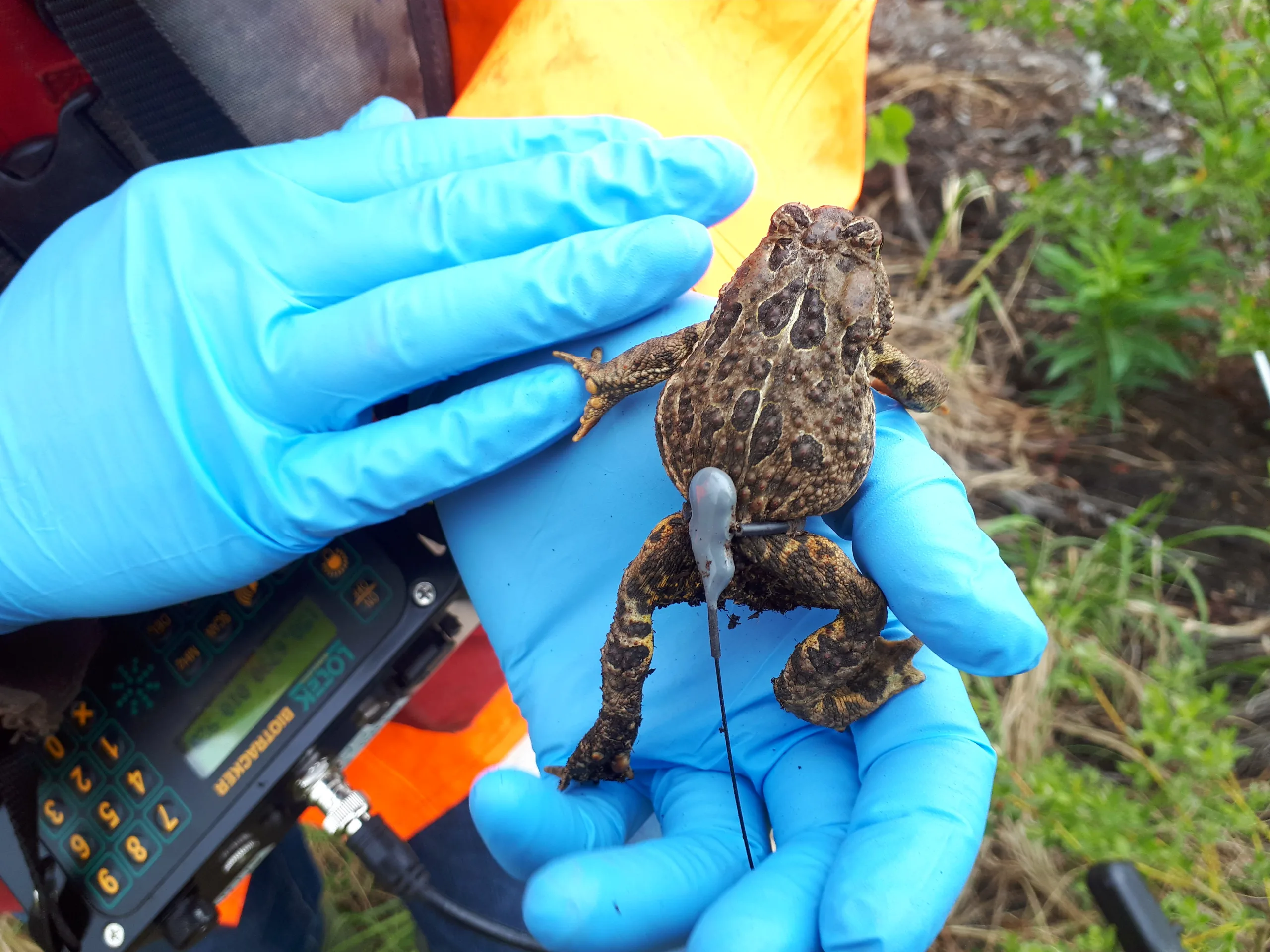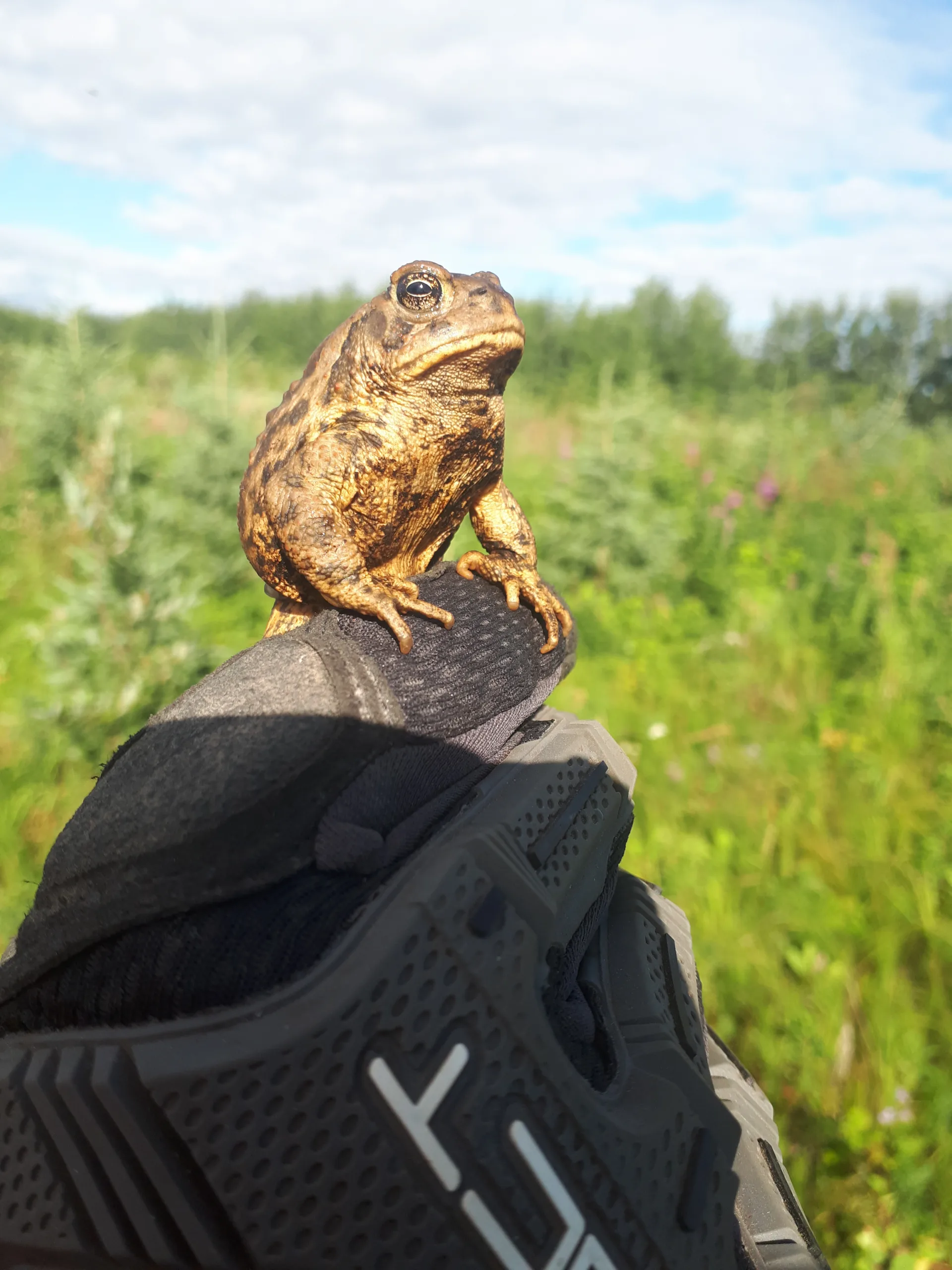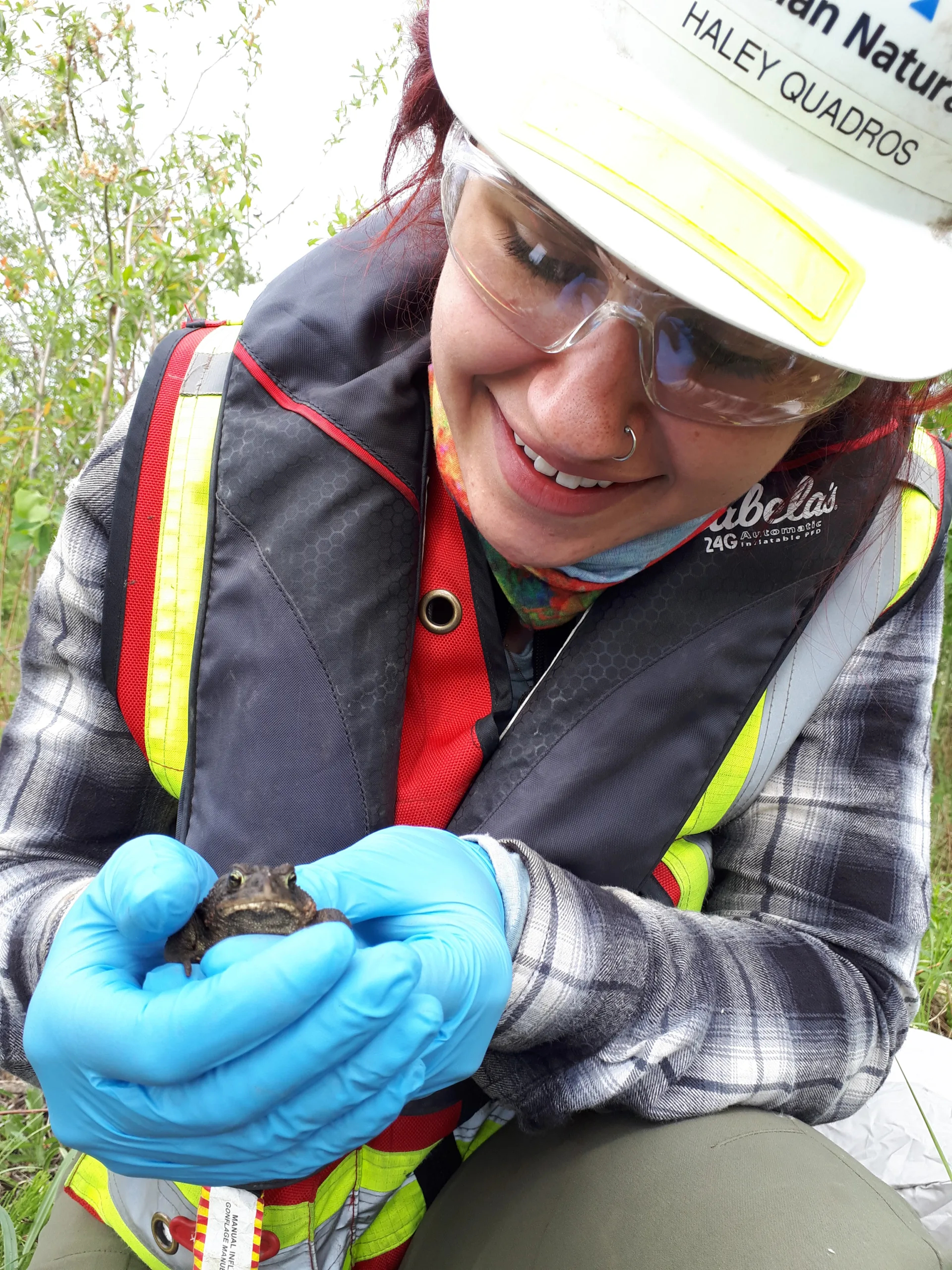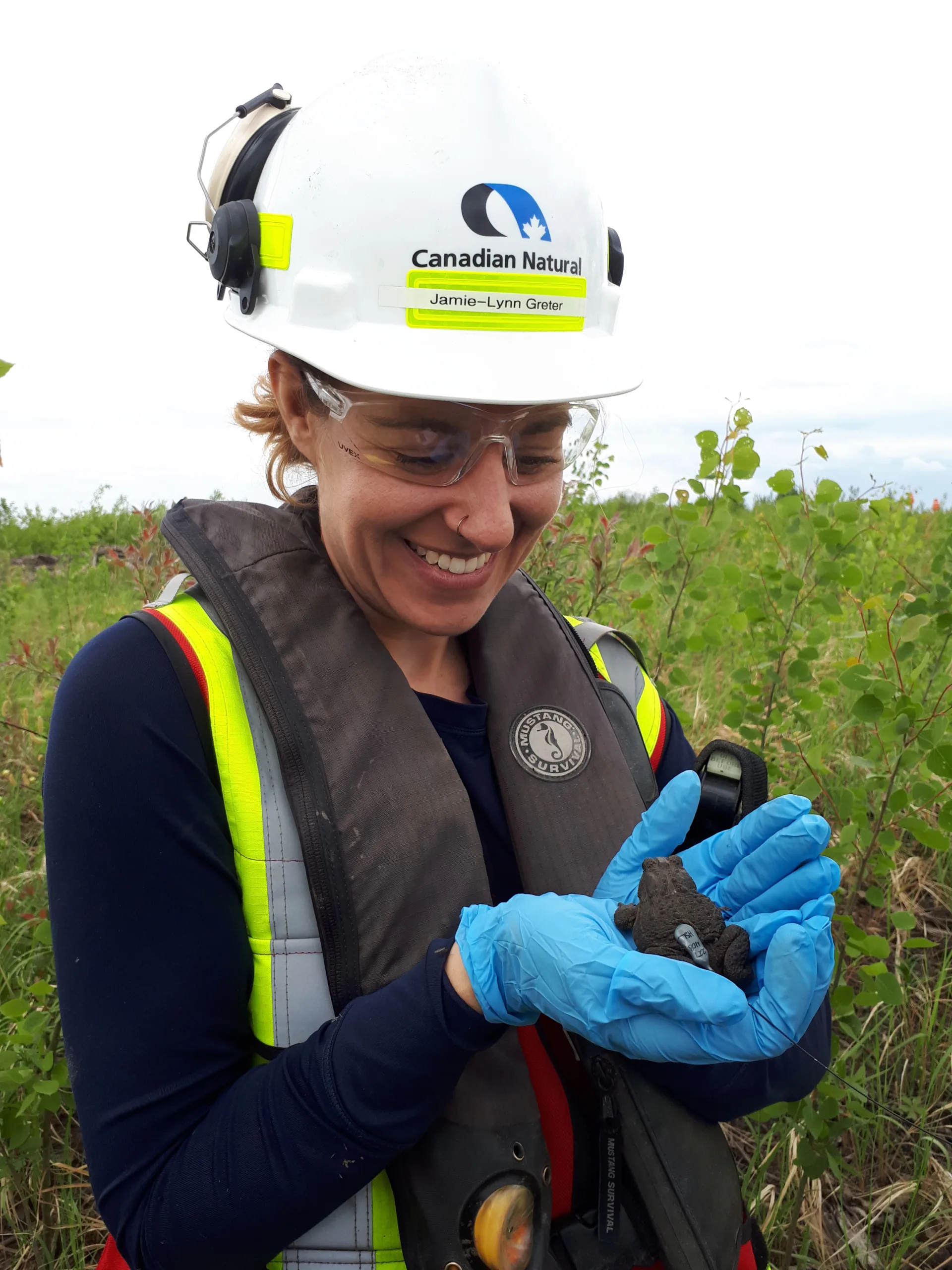Toads with backpacks: what’s going on?

One of the innovative ways that Canadian Natural is using research and technology to manage the impacts of its operations is by monitoring and relocating Canadian Toads at Horizon Oil Sands Site in northeastern Alberta.

The Canadian toad, also known as the Dakota toad, is the smallest toad in Alberta, ranging between 37-75mm long. These toads are typically found in river valleys or along lakes with sandy borders but have been declining in many regions across Canada since the 1980s.
At Horizon, they are found in the company’s sand pits, near the overburden. The sand plays an important role for these toads in the winter, as they burrow below the frost to prevent freezing while they hibernate.
Recently, the Alberta Endangered Species Conservation Committee (ESCC) listed the species as “maybe at risk” due to lack of data available on them. There has been no formal large-scale research program to accurately track their numbers and historical information on their population size is limited.
Through a collaborative COSIA project, the Canadian Natural environment team at Horizon Lake worked to identify the most cost effective and efficient approaches for carrying out this needed research.
The relocation process involved several steps to ensure the environment team is doing it right. Before the toads are moved to a new location, they are collected and photographed, and the ones that are large enough are fitted with a radio transmitter “backpack” designed to track them over a short period of time.


This is an ongoing initiative. To date, the team has relocated 586 toads and fitted 46 radio backpacks. The environment team then monitors the toads’ home range territory size to see where they are going once released.
All transmitters from the toads were removed prior to winter. Additional work is now planned to verify the success of the relocation program and determine if further measures need to be taken to protect the species or their habitat.